
-
Find the right food for your petTake this quiz to see which food may be the best for your furry friend.Find the right food for your petTake this quiz to see which food may be the best for your furry friend.Featured products
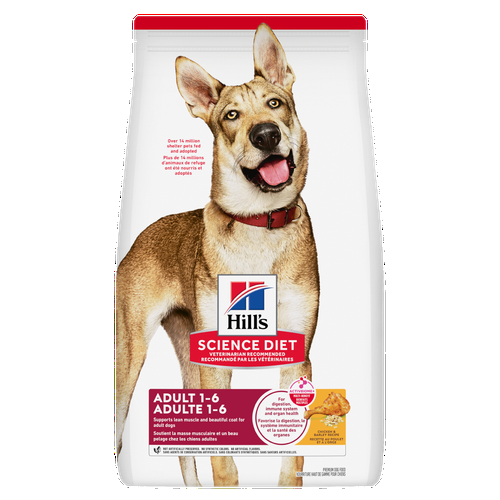 Adult Chicken & Barley Recipe Dog Food
Adult Chicken & Barley Recipe Dog FoodSupports healthy immune system, digestion, lean muscle & beautiful coat
Shop Now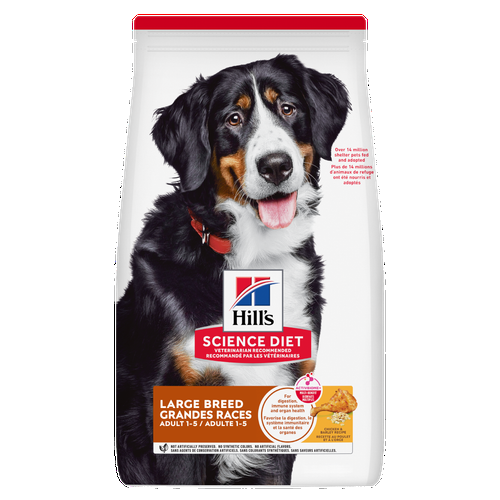 Adult Large Breed Chicken & Barley Recipe Dog Food
Adult Large Breed Chicken & Barley Recipe Dog FoodSupports healthy joints, immune system, digestion, lean muscle & beautiful coat
Shop Now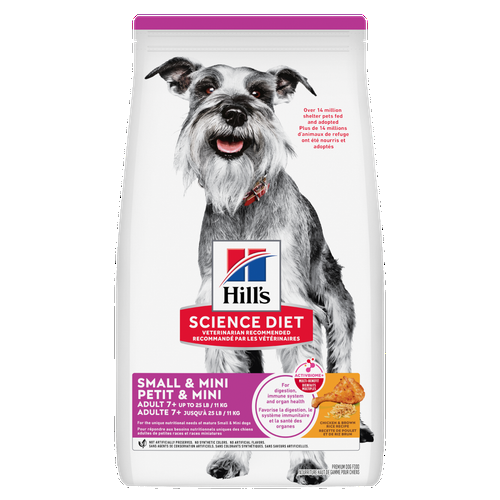 Adult 7+ Small & Mini Chicken & Brown Rice Recipe Dog Food
Adult 7+ Small & Mini Chicken & Brown Rice Recipe Dog FoodSupports energy level & luxurious coat in Small & Mini dogs. Helps keep immune system, heart & kidneys healthy.
Shop NowFeatured products Adult Perfect Digestion Salmon, Whole Oats, and Brown Rice Recipe Dog Food
Adult Perfect Digestion Salmon, Whole Oats, and Brown Rice Recipe Dog FoodScience Diet's breakthrough nutrition supports ultimate digestive well-being & healthy microbiome
Shop Now Adult 7+ Perfect Digestion Chicken, Barley & Whole Oats Recipe Cat Food
Adult 7+ Perfect Digestion Chicken, Barley & Whole Oats Recipe Cat FoodScience Diet's breakthrough nutrition supports ultimate digestive well-being & healthy microbiome for cats age 7+
Shop Now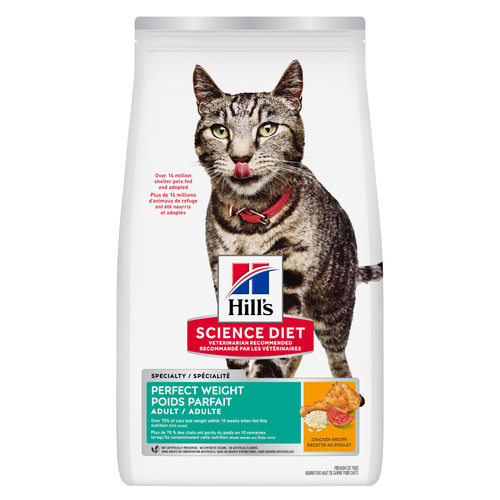 Adult Perfect Weight Chicken Recipe Cat Food
Adult Perfect Weight Chicken Recipe Cat FoodOver 70% of cats lost weight within 10 weeks when fed this nutrition (USA Study)
Shop Now -
Dog
- Dog Tips & Articles
-
Health Category
- Weight
- Food & Environmental Sensitivities
- Urinary
- Digestive
- Joint
- Kidney
- Dental
- Cancer
-
Life Stage
- Puppy Nutrition
- Adult Nutrition
- Senior Nutrition
Cat- Cat Tips & Articles
-
Health Category
- Weight
- Skin & Food Sensitivities
- Urinary
- Digestive
- Kidney
- Dental
- Stress
- Cancer
-
Life Stage
- Kitten Nutrition
- Adult Nutrition
Featured articles Compare Your Pet Food's Calories to Other Brands
Compare Your Pet Food's Calories to Other BrandsCompare Hill's Science Diet dog and cat food's calories against other pet food brands and AAFCO recommended maximum calorie count.
Read More Pet Food Storage Tips
Pet Food Storage TipsDiscover how and where to store your dry, as well as canned, dog and cat food. Learn how to find the "best before" dates on all Hill's pet food packaging.
Read More The Incredible Science Behind Your Pet's Microbiome
The Incredible Science Behind Your Pet's MicrobiomeLearn what a pet's microbiome is, how it contributes to your pet's gut & overall health, and why nutrition is important in maintaining healthy microbiomes.
Read More -


While rubbing your furry friend's belly, you may wonder if your dog or cat has a belly button. The fact is yes, they do! But, their's isn't as prominent as those on humans. Almost all mammals have a belly button. Let's take a look at what it looks like, where it's located and more.
Location and Appearance
With few exceptions, mammals like cats, dogs and humans have belly buttons located on their abdomen, but birds do not. On cats and dogs, it's near the base of their rib cage, not low on their abdomen as you might expect. A belly button is actually a scar left behind after the umbilical cord is detached and then clamped. On animals, it's a small, flat scar, nowhere as prominent as most human belly buttons, which is why it's difficult to find it under all their fur on their stomach. You may feel it while giving your dog a belly rub, and if you gently part the fur on their underside, you should be able to spot your pet's navel.

The shape and size of a human belly button is determined by how the umbilical cord is cut and clamped, explains Healthline, and also the way the surrounding tissue heals, and the same goes for other mammals. On some cats and dogs, there may be a swirl of fur around their belly button or even a small navel bump, but their belly buttons do not resemble those on humans.
Function and Removal
In mammals, the umbilical cord connects the baby's abdomen to the mother's placenta (an organ that develops in the womb during pregnancy), transferring nutrients and oxygen to the baby as it grows. Once the baby is born, the umbilical cord is no longer necessary.

Human umbilical cords are removed with a surgical tool, but other pet parents must gently chew off the umbilical cord. If you are present during a birth and a mama dog is having trouble removing the cord, she'll need a human to step in and help, says the American Kennel Club and the same is true for cats. If you aren't sure how to help, always speak with your veterinarian to ensure the safety and health of your pet.


Tasty Tips
Young pets may need several visits in their first year for vaccinations. Adult pets generally benefit from annual check-ups, while senior or special-needs pets might require more frequent visits.
Belly Button Health Concerns
Although they rarely cause issues in an animal's day-to-day life, belly buttons can develop umbilical hernias, the most common type of hernia for dogs and cats. This type of hernia is usually identified in puppies and kittens. An umbilical hernia presents as a soft bump under your pet's navel. Some umbilical hernias can heal on their own, notes the Pet Health Network, but it's best to have your vet take a look to ensure that the hernia doesn't grow larger or pose a health problem.
Belly buttons are a quirky physical feature that you may think about only when petting a cat, dog or other furry friends, but now you know that pets do indeed have belly buttons.


Christine O'Brien is a writer, mom, and long-time cat parent whose two Russian Blues rule the house. Her work also appears in Care.com, What to Expect, and Fit Pregnancy, where she writes about pets, pregnancy, and family life. Find and follow her on Instagram and Twitter @brovelliobrien.
Related products

Supports healthy joints, immune system, digestion, lean muscle & beautiful coat

Supports healthy immune system, digestion, lean muscle & beautiful coat
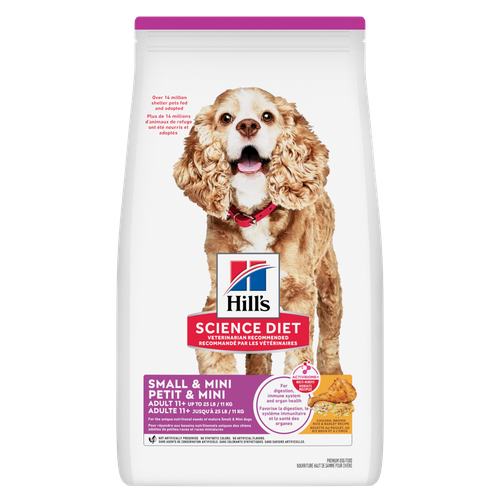
We make every bag of our dry dog food in our own US facilities with highest quality ingredients from North America, Europe and New Zealand. These ingredients must meet our strict requirements for purity and nutrient content, which exceed industry standards.
You can make a difference in the lives of shelter pets. With every purchase of Science Diet you help feed shelter pets globally - every day. In AUSTRALIA, since 1997, we have provided over 1.6M kg of Hill's pet food to LOCAL ANIMAL SHELTERS. Learn more at http://hillspet.com.au/shelters

Supports energy level & luxurious coat in Small & Mini dogs. Helps keep immune system, heart & kidneys healthy.
Related articles

Learn why nutrients like antioxidants & amino acids can help improve your pet's immune system, as well as top antioxidants to look for in pet food.

Discover how and where to store your dry, as well as canned, dog and cat food. Learn how to find the "best before" dates on all Hill's pet food packaging.

Learn what a pet's microbiome is, how it contributes to your pet's gut & overall health, and why nutrition is important in maintaining healthy microbiomes.

Compare Hill's Science Diet dog and cat food's calories against other pet food brands and AAFCO recommended maximum calorie count.

Put your pet on a diet without them knowing
Our low calorie formula helps you control your pet's weight. It's packed with high-quality protein for building lean muscles, and made with purposeful ingredients for a flavorful, nutritious meal. Clinically proven antioxidants, Vitamin C+E, help promote a healthy immune system.
Put your pet on a diet without them knowing
Our low calorie formula helps you control your pet's weight. It's packed with high-quality protein for building lean muscles, and made with purposeful ingredients for a flavorful, nutritious meal. Clinically proven antioxidants, Vitamin C+E, help promote a healthy immune system.

